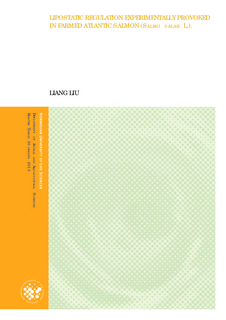| dc.description.abstract | The present study was conducted to investigate the influence of various salmon fatty
accumulations in the early summer on the growth of Atlantic salmon in the following
autumn and if this may be linked to sexual maturation preparation. The effect of
varying dietary supplementation treatment on the growth of Atlantic salmon was also
studied.
During the build-up phase from 21st May to 8th August, the Atlantic salmon was
distributed into 3 cages with an initial mean body weight of 1085 g ± 2. Three
different pre-diets: T1: 100% original Cod feed, T2: 50% ration of original Cod feed
and T3: 100% original Atlantic salmon feed were used in this period. The build-up
phase was designed to provoke the varied muscle fat content and body weight in the
early summer. Thereafter, in the second experimental period (from 9th August to 6th
December), individually marked (Pit-Tag) fish were randomly selected from each
build-up group and polled in 12 identical net-pens. Three different autumn diets were
supported in randomized block design, which were Control feed T6, Marine feed T4
and Protein feed T5 (Control feed + 2% glutamate/arginine). The influence of
different initial muscle fat content in the early summer on the growth rate (SGR and
TGC), body weight and muscle fat deposition in the following autumn and if this
affects the sexual maturation preparation was determined. We also investigated the
effect of different ingredient supplemental diets on the growth of fish.
At the end of the build-up phase, fish fed T3 Salmon diet was shown to have a high
muscle fat content. During the second experimental period, glutamate/arginine and
rapeseed oil supplemental diets had no significant effect on growth rate and feed
utilization. However, significant differences were observed within pre-dietary groups.
Fish with low initial muscle fat content obtained a significantly higher growth (SGR
and TGC) than their counterparts. Both partial compensation and over-compensation
III
had been achieved in the study. The obtained differences in growth and fat content
accumulation could be considered as results of lipostatic regulation, meanwhile that
also might be closely linked to the sexually mature preparation. We thus presumed
that fish will slow down or even stop their fat accumulation once certain fat and
energy reserves have been achieved according to lipostatic regulation and/or sexual
maturation. | no_NO |
